Demaking
Hotline Miami

Hotline Miami, by Dennaton Games
Hotline Miami is a retro game for the PC, a top-down action shooter that features ultra violence fast paced action. By being a retro game, one could assume that it would translate almost seamlessly to an older system like the NES but the reality is much different. There are several gameplay elements in Hotline Miami that make it a current game and are not so easily translated to an older system.
What Makes Hotline Miami Tick
Speed
Speed is essential to the experience of Hotline Miami and it's supported by many gameplay decisions. Most enemies die in one-hit and so does the player. Movement is fast and smooth and attack animations are also fast and precise, except with executing a downed enemy, but that gives it more cinematic impact. Finally reload time is practically instant, meaning that the momentum never truly stops for the player because they can press a button and restart the level in a microsecond.
These elements have other consequences that must be taken into account when making a demake. The first is that the smooth 360 turns with mouse and keyboard do not translate well into a top down controller. The game would feel sluggish, losing a lot of the precision and speed that mouse and keyboard provide for that type of game.
The reload time also has a lot of further implications in gameplay. The most direct one is the fact that momentum is not broken after death, but the problem here is that this reload time would probably not be possible on the NES.
The fast reload is achieved because Hotline Miami is a rather simple game for the hardware that it runs on (modern-day computers) so instantly reloading a stage with the press of a button is no big deal for these machines. An NES would have a harder time doing so and the instant level reload would be lost.
This also affects the death mechanic. In Hotline Miami the player can die in one-hit, which happens fast and at times players will attack the player from off-screen, hitting them with a bullet and killing them instantly. While this may seem unfair in most games, this is mitigated by the instant reload in Hotline Miami. Since the player can jump right back in, death doesn't feel like that big of a setback.
Camera and Controls
The top down camera is a staple of the game. It provides tactical advantage to the player as they are able to see more than the enemies. This is an important feature of the game, due to the one-hit mechanic. The player can plan and time their approach with full knowledge of patrol patterns and guard positions in nearby rooms. Without this type of visualization, the one-hit kill would feel extremely unfair.
This type of camera also works very well with keyboard and mouse because it detaches the movement axis from where the character is aiming. With WASD controls and mouse, you can aim to the right or the left but still move “up” on the screen. It's a 360 style of movement because the aim and move commands come from two different inputs. There is also a smooth transition across all angles, meaning that the player is not locked to four main angles (up, down, left or right) but can aim diagonally across the screen.
The camera visuals also look good with a top down camera because Miami Hotline runs at a much higher resolution than games on the NES would run. That means that even if the game has a pixelated style, it still has a lot of pixels at its disposal to display information. This is why even though the angle is unconventional, orthographic top-down, the player can identify enough detail on the character model, enemies, items and level.
Demaking Hotline Miami
Speed in the age of the NES
The speed of Hotline Miami needs to be preserved while still making the game fair and taking in account for the lower processing power of the NES so the following elements would need to change:
The Instant Reload
The NES would not be capable of reloading the level as fast as a modern computer can so the instant reload after death would not be achievable due to the tech. An intermediary screen would have to be created to account for that.
One-Hit Death
Although this is a staple of the game, without the instant reload all of the rest of the gameplay would have to be slowed down so as not to feel unfair to the player. However, Hotline Miami is still a game about aggression and charging into action. If the respawn is slow AND the player dies in one-hit, then the style of play would not be nearly as aggressive and the gameplay would change dramatically. One way to mitigate this is to give the player more margin for error. A small health bar with two or three hits would do the trick to keep risk high, but also serve as a safety net for the player while they charge ahead. Another thing to note here is that enemies should no longer be able to attack the player from off screen as it currently happens. In this system, that would feel cheap and unfair.
Camera and Controls
The top-down camera is important to the game because it provides tactical advantage to the player, which supports the aggressive playstyle by giving the player a chance to plan their approach. However, the angle would need to change in order to convey a similar level of detail and information on the NES.
For example, look at the level of detail in this screenshot present in the game:
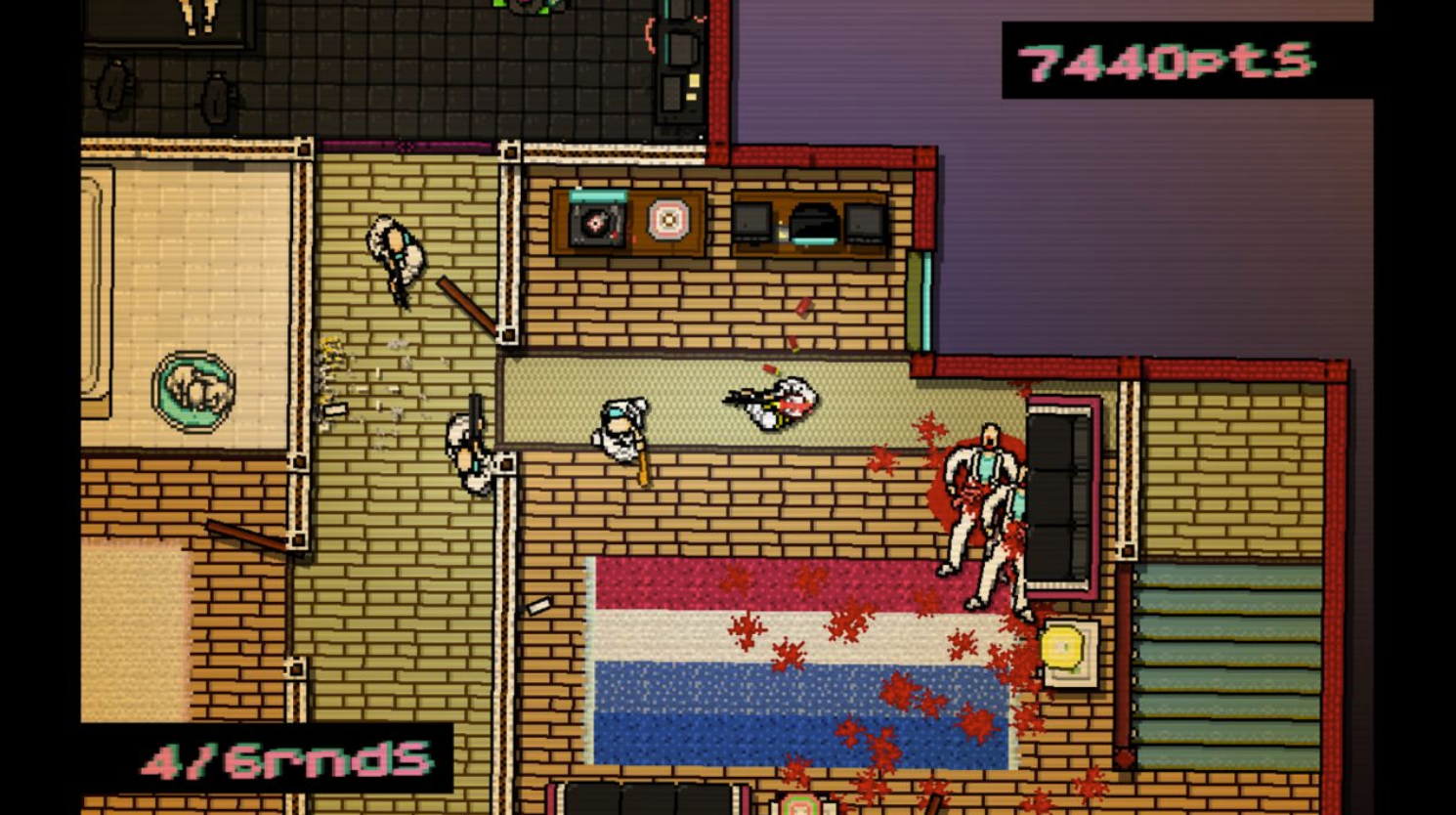
Hotline Miami, by Dennaton Games
Although it is a retro game, there is a lot of information being displayed in terms of level and character sprites. The NES does not possess enough resolution to show this much information.
One solution would be to use a similar camera angle to the original Metal Gear on NES:
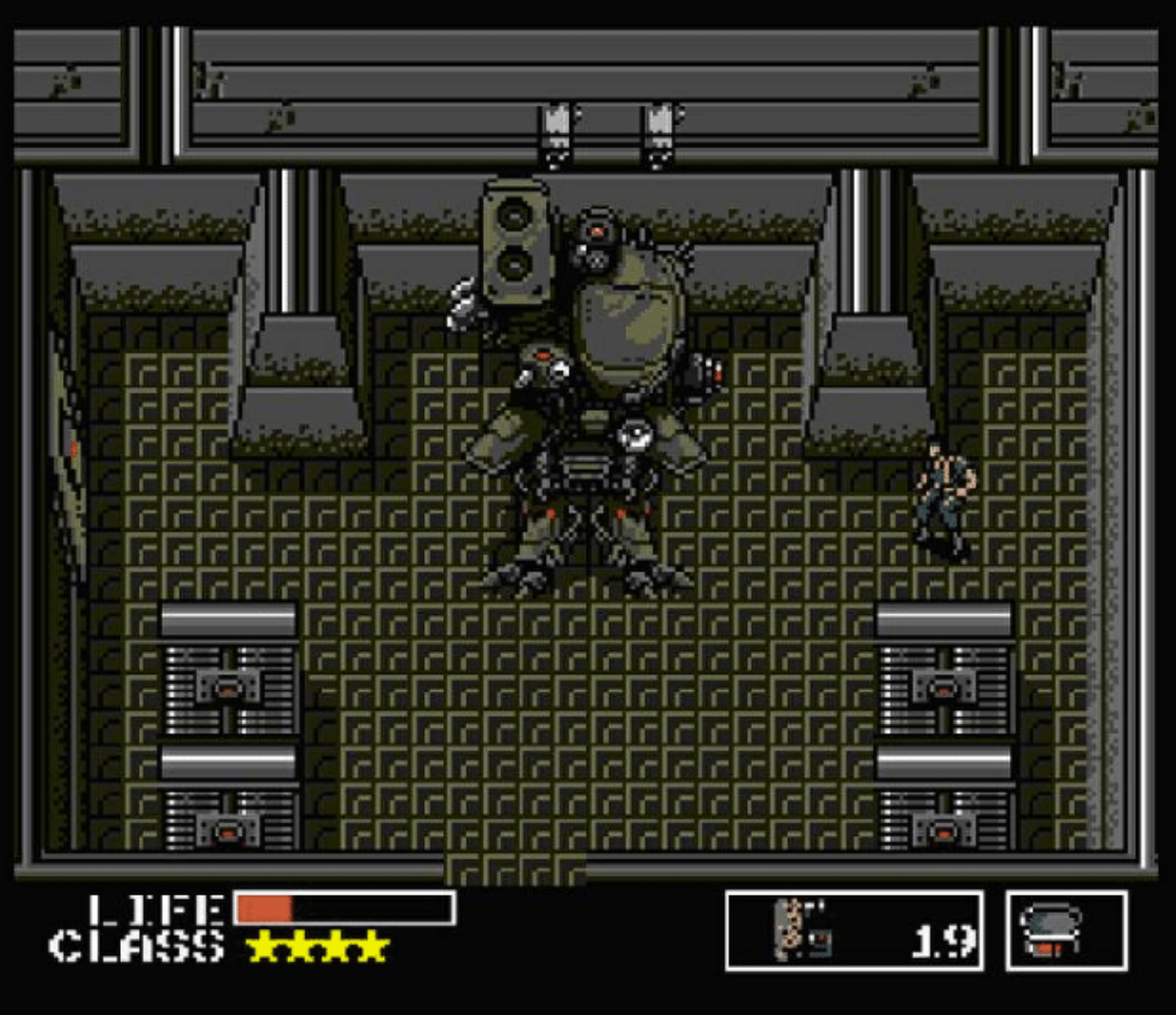
With the change in perspective, games like Metal Gear still offer the same tactical view of the scenario and depict an adequate level of information even with the lower resolution.
This camera style is still top down, giving the player view of the entire battlefield, but the character model is drawn from a side view. This conveys more information to the player with the limited resolution of the NES.
The 360 Controls
As mentioned before, the 360 spin that you have in Hotline Miami is possible because the Aim and Move inputs are separate (Mouse and Keyboard), but the NES controller only has one movement input with the directional pad. Keeping the 360 spin would mean adding “tank controls” to the player character and these tend to be sluggish and slow.
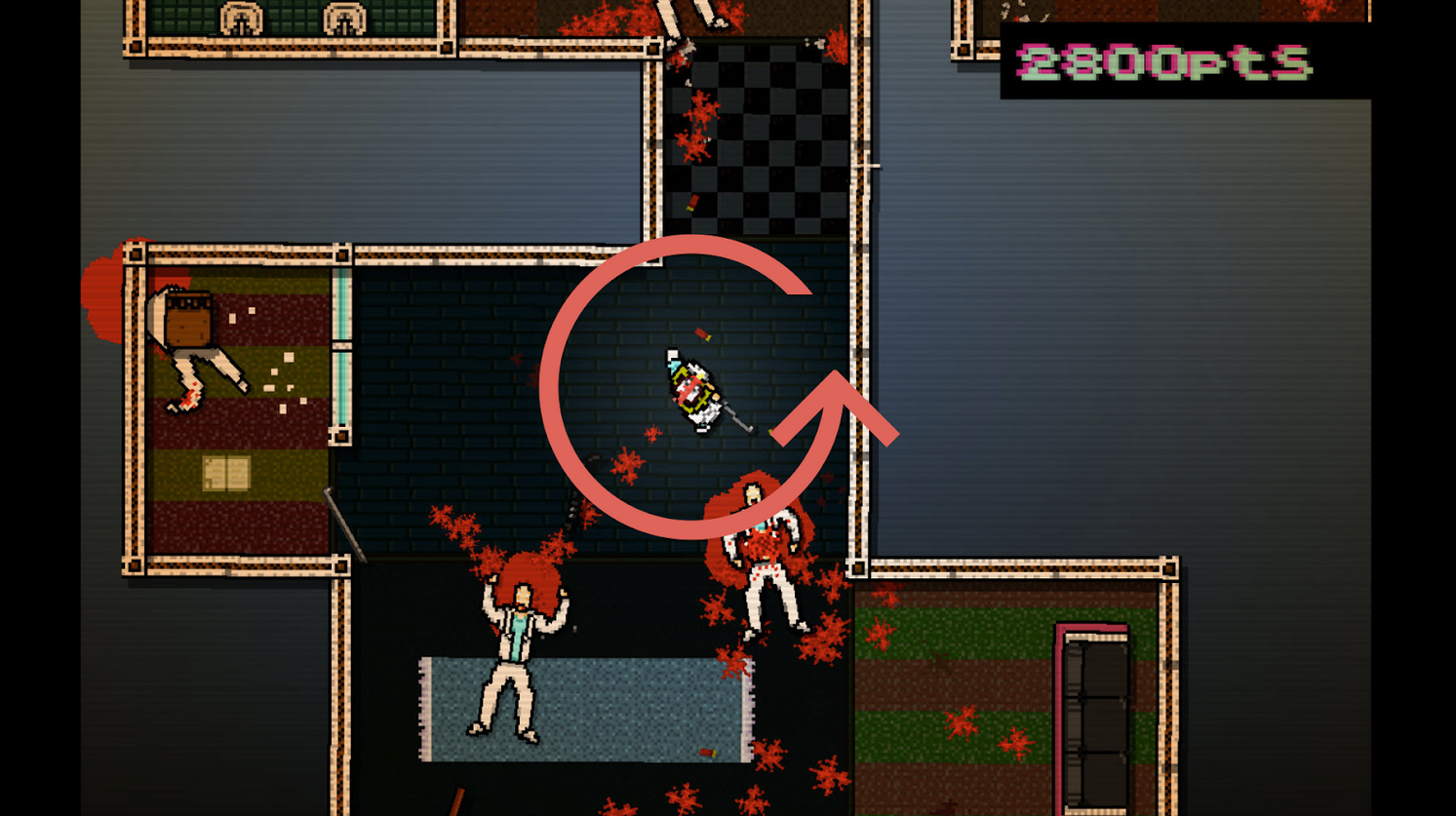
Because of the Mouse and Screen, or even double thumbsticks, the player can turn the character in any direction and provide walking input in a different direction at the same time
This means that in practice, a player can attack an enemy that is not on the same Y or X axis as they are. As they rotate the mouse to the right the Character would rotate in place, allowing them to aim at the enemy.

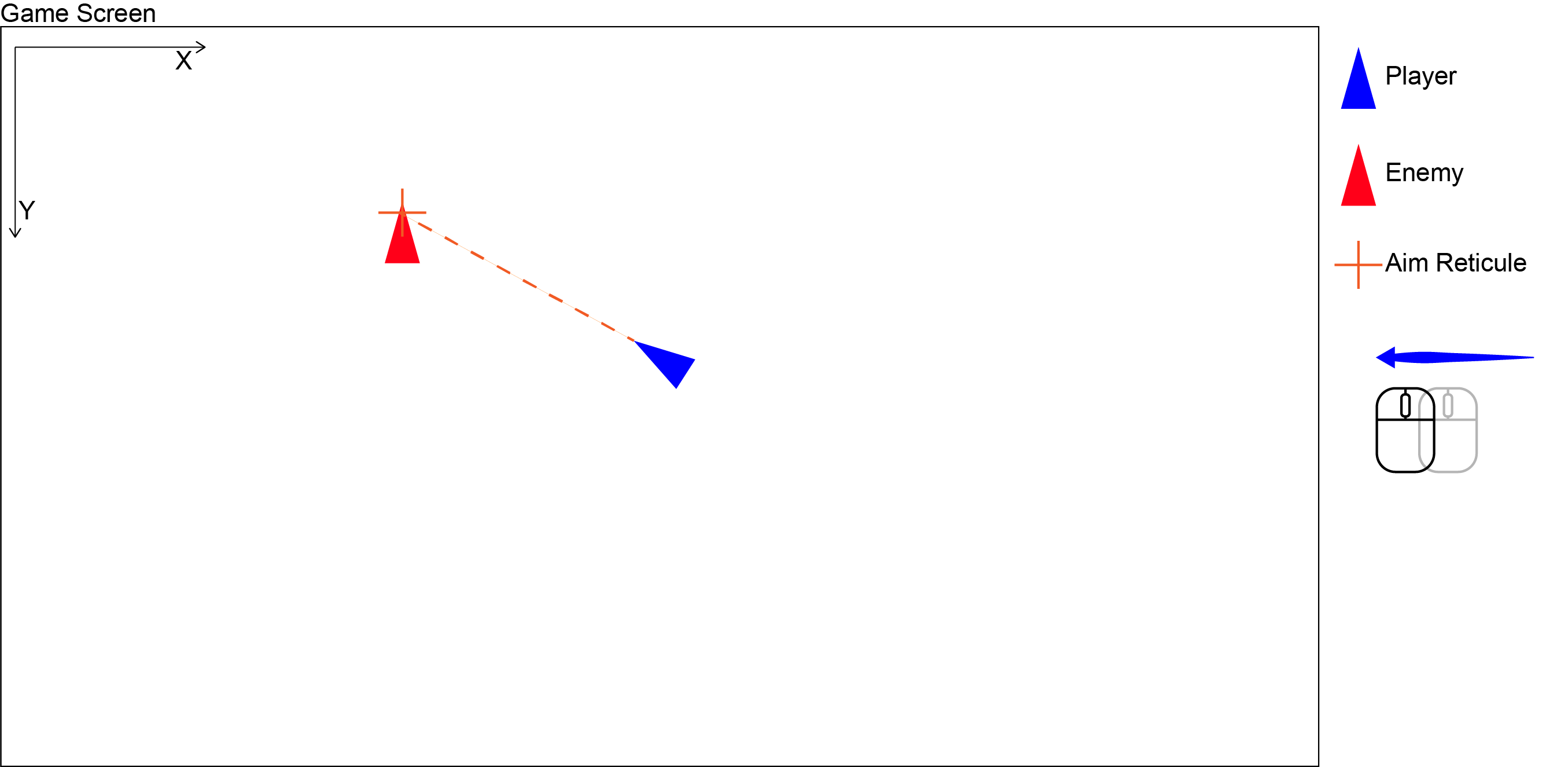
A solution to this problem would be to eliminate the 360 angle and use just the 4 main axis of movement. So the player can move/shoot in these four directions: Up, Down, Left Right. Pressing Up both moves the character up on the screen and aims their weapon up, the same should happen for all other directions.
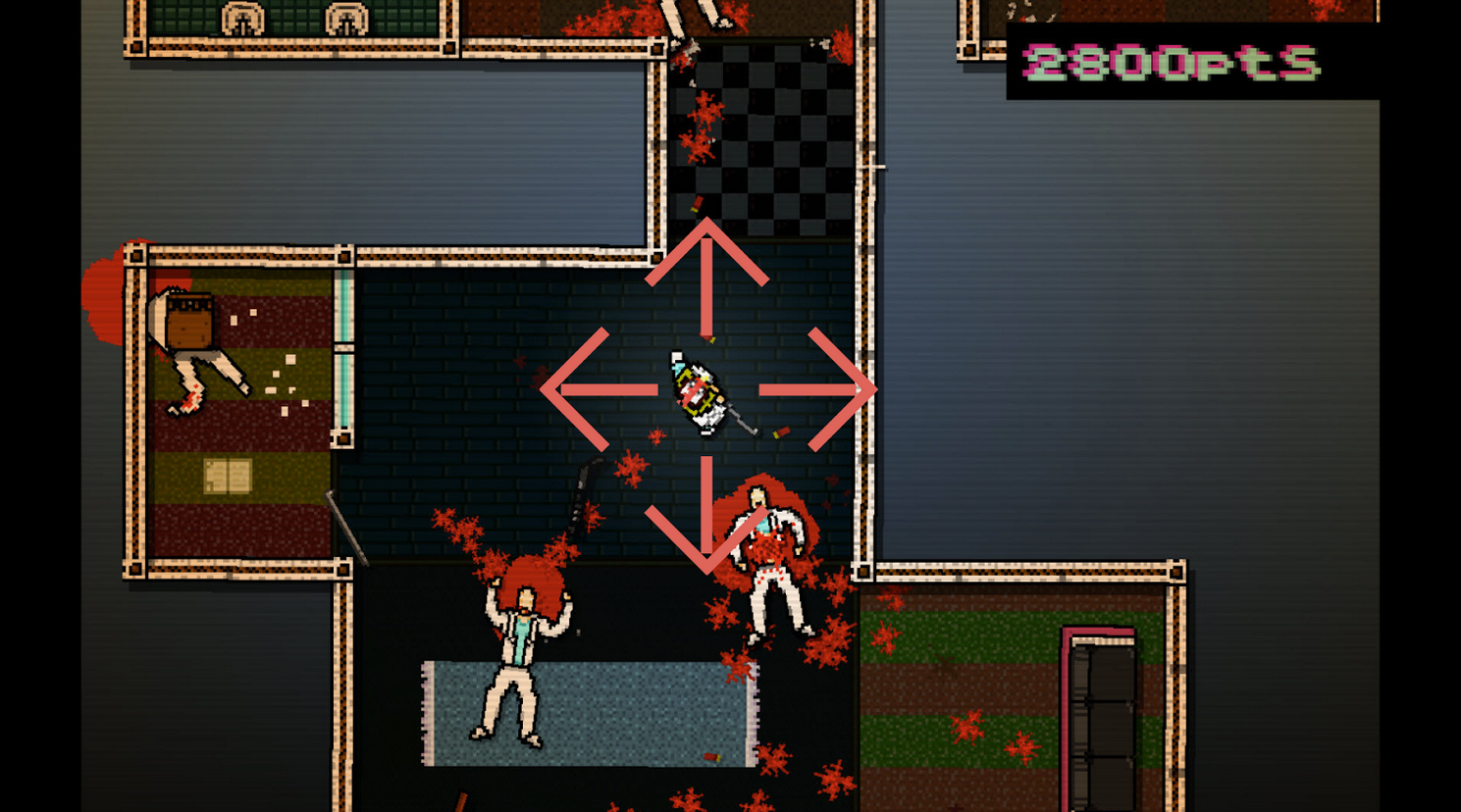
For the NES, a better strategy would be to lock the player in the 4 main axis
It is possible to use the left and right buttons on the NES D-Pad to rotate the character, but that type of control is slow and doesn't match with the speed of Hotline Miami. A better solution is to make the character turn completely to the left or to the right as the player presses the D-Pad in those directions. This also means that the player can now only aim at enemies that are either on the same Y or the same X axis as they are.


A simple click to the left button on the D-PAD should turn the player to the left
The enemies would also need to stop attacking in diagonals, again for fairness.
Locking them into the same axis as the player makes combat intuitive as everyone is following the same rules and makes their attacks easier to predict for the player.
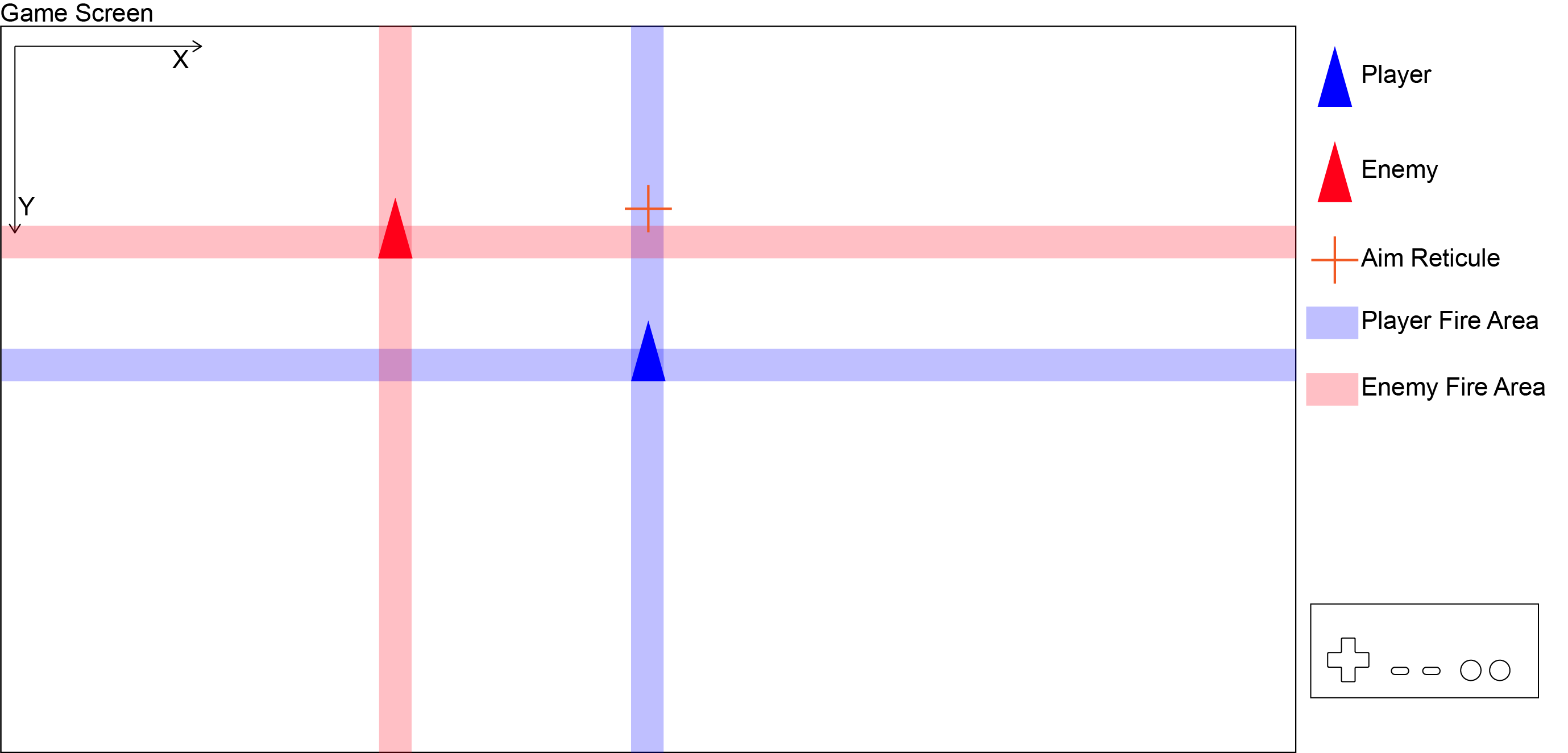
Other than that, Hotline Miami only has two major actions which are Attack/Shoot and Pickup/Throw weapons. These can be easily mapped to the NES two buttons.
The Melee Enemies
Hotline Miami features a few enemies that try to attack the player with Melee weapons. Those can be regular goons, heavy goons that take more than one-hit to kill and dogs that can sense the player without needing to see them. The way these enemies act is to run straight at the player, at full speed, and attack them once they get to them. On a PC, this is not that big of a problem because the player can walk backwards to avoid being attacked while shooting at the enemies at the same time.
This behavior becomes an issue when the player has only input for directing the player character, as is the case of the directional pad with the NES. This means that either the player will eliminate all melee enemies before they get to them, or they will need to run forever from them, never getting the chance to face them and shoot.
The way to fix this is to change the behavior of the melee enemies in two steps
- Give them slower movement speed, so the player can get away from them, turn and then shoot
- Make them pause in place when near the player before lunging with an attack animation
Number one is pretty straightforward. If the enemies move slower than the player, then the player can eventually get away far enough to have a chance to shoot them. The second part is to ensure that the player has one last moment to either dodge or shoot before they are hit. The idea is that the melee enemy will make its way toward the player and, before reaching them, will pause in place and play a "charging up" animation as if they are winding back for an attack. After the animation they will lunge in the direction that the play was when they first started the animation with an attack. If the player is still in that location, they will get hit. This ensures that the player has a chance to dodge or fight back against the melee enemy with the limited controls of the NES.
Level Streaming
In Hotline Miami, as the player moves through the level, the camera follows them, slowly revealing the environment. This is another feature made possible by the high processing power of current computers. While the environment is not yet being displayed, it is being managed by the application and is occupying processing power. Which is also why players can be attacked by enemies that are off screen.
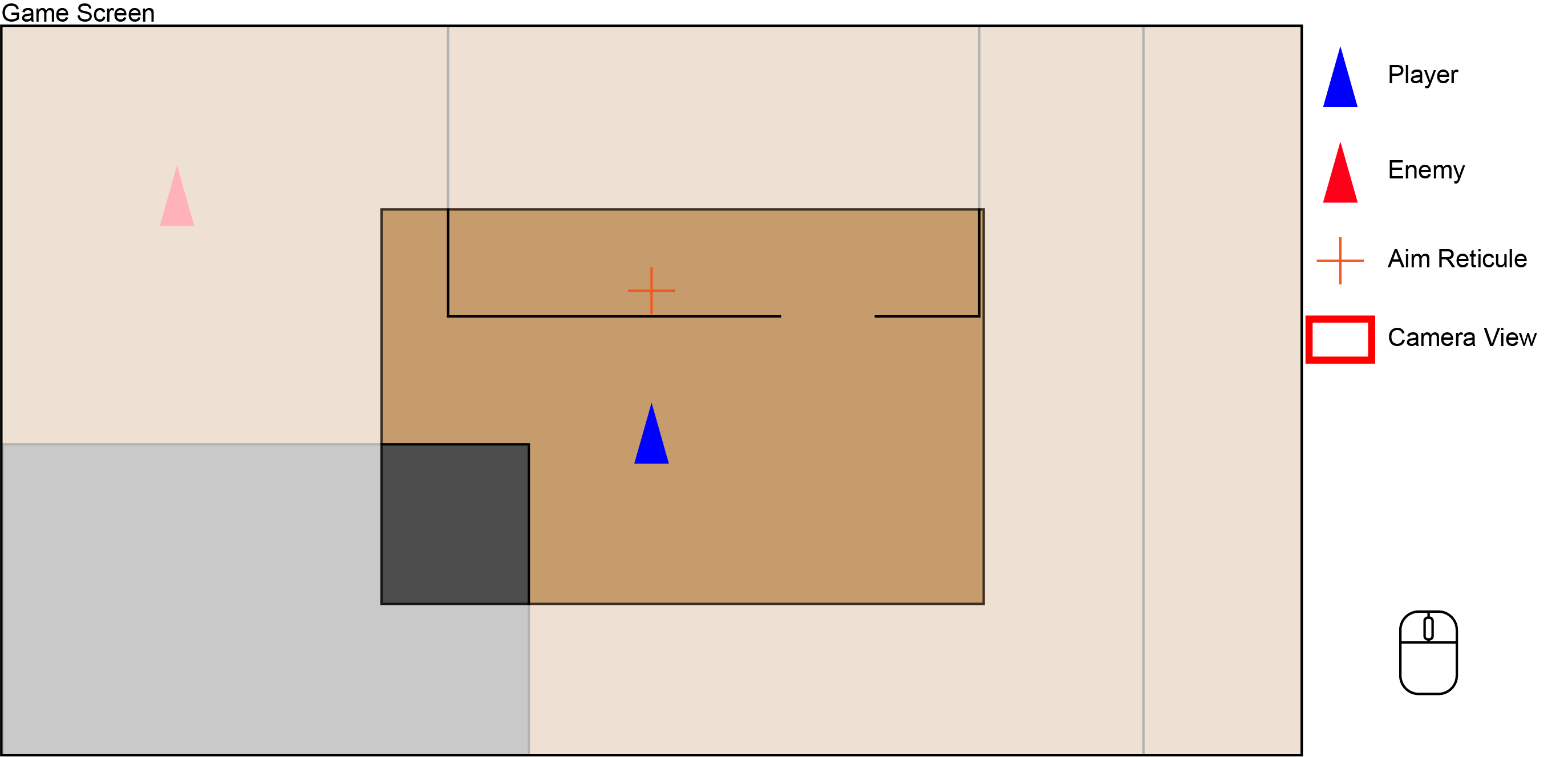
In this case, the offscreen enemy is being processed and it can attack the player. The camera is also centered on the player at all times
Processing Power on the NES could not be wasted like that, so changes to the camera must be made. The camera would need to show the entire section of the level, not centered on the player, with all active enemies on screen. In order to further save on processing power, levels need to be broken down into smaller parts, similar to how the first Zelda dealed with dungeon rooms.
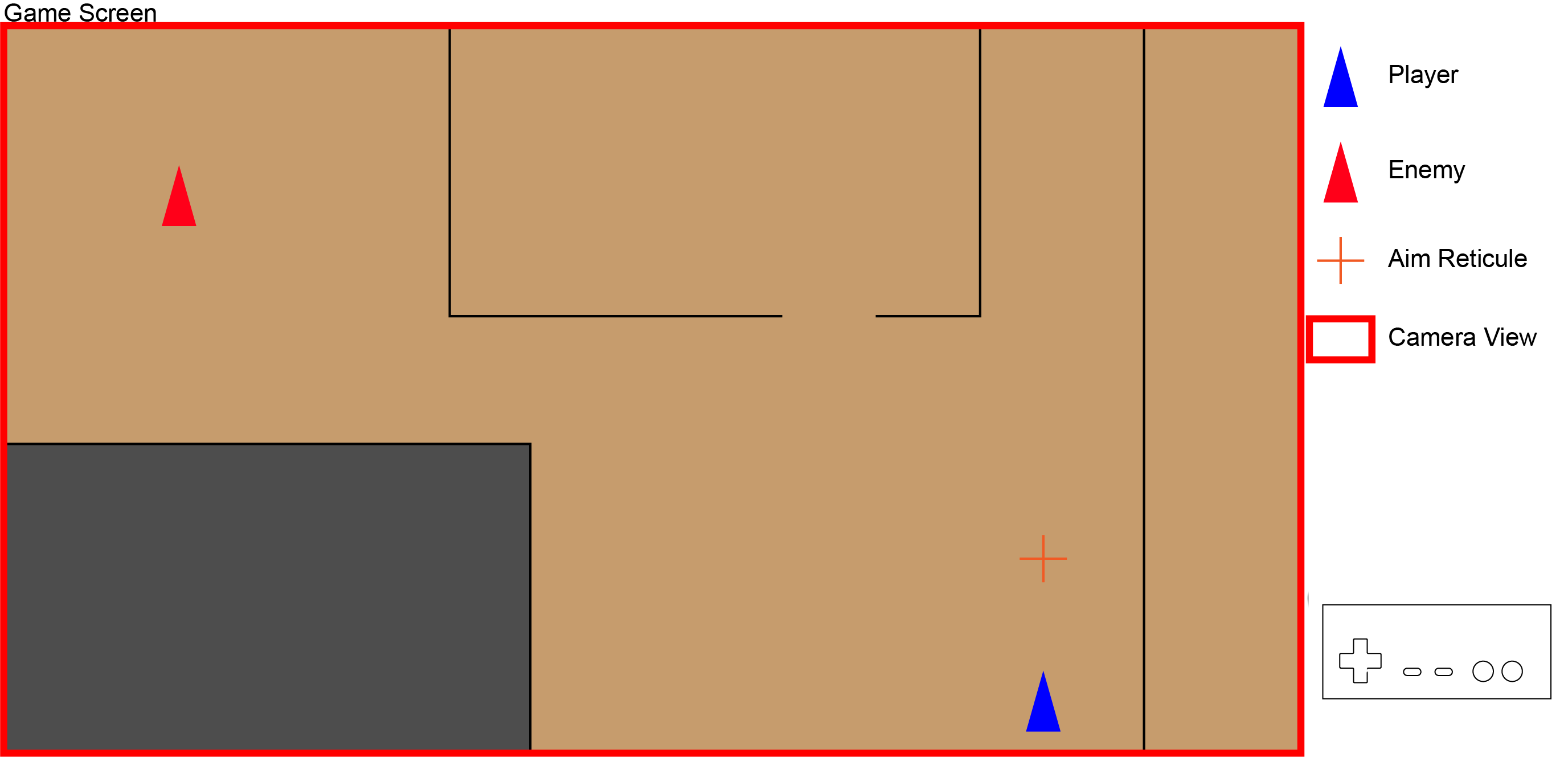
In this example, the camera is always seeing the entire section of the level. The active enemy is visible and the player is not centered.
Other Considerations
Hotline Miami uses a rich palette of color filled with neon tones and other elements. Therefore the art would have to be revisited to account for the NES's much more limited color palette. The main palette of the game could probably remain in place with little alteration, but we would need to see an increased repetition of colors.
Hotline Miami makes good use of retro pixelated graphics in order to tell its story and deliver the gameplay, but when we get down to it, there is a lot that makes this game unquestionably modern. The idea of demaking a "retro" game might seem redundant, but when taking into consideration the specific controls of the NES and its limited processing power, it is easy to notice what would need to change in a game such as Hotline Miami.
Conclusion
Hotline Miami makes good use of retro pixelated graphics in order to tell its story and deliver the gameplay, but when we get down to it, there is a lot that makes this game unquestionably modern. The idea of demaking a "retro" game might seem redundant, but when taking into consideration the specific controls of the NES and its limited processing power, it is easy to notice what would need to change in a game such as Hotline Miami.